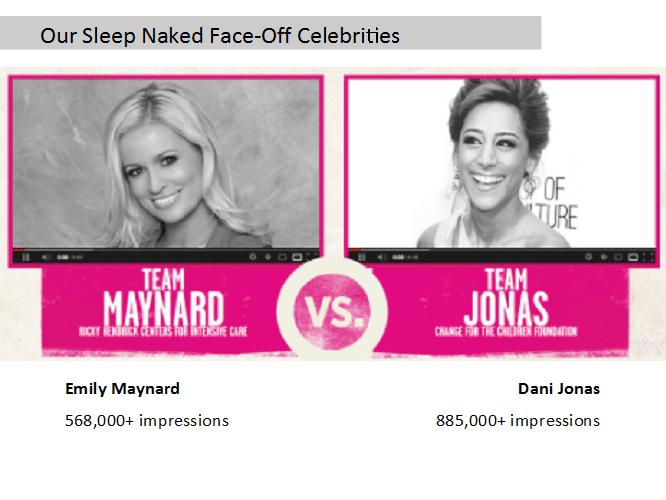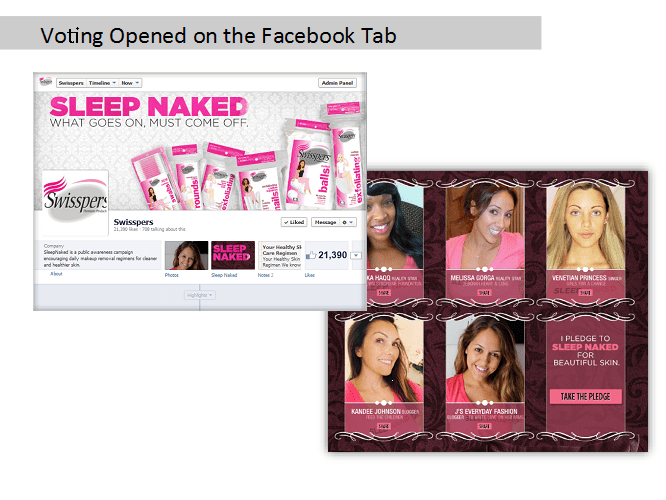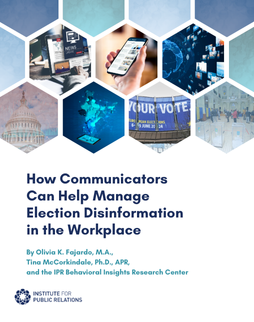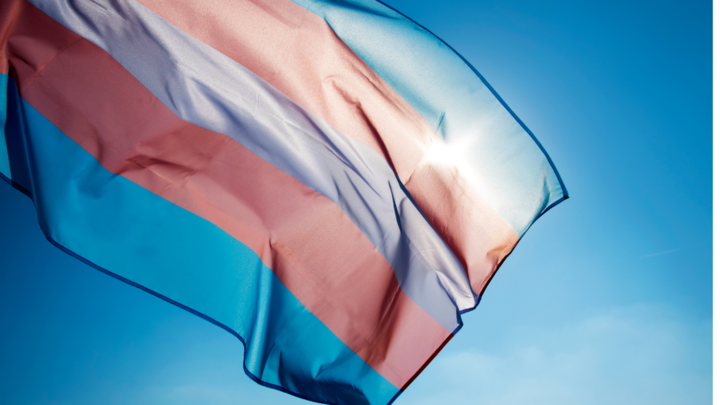This blog post introduces the winning case study of IPR’s first annual Social Media Case Study Competition that will be published in the next issue of the Research Journal of IPR to be released in the next few weeks.

Research & Planning
The communications objectives for both campaigns were to create brand awareness and preference for Swisspers Premium Cotton Rounds among its target audience of women 18-34. Secondary research and two online tracker surveys shaped the strategic approach of capitalizing on the audience’s engagement with social media, using influential bloggers and celebrities as opinion leaders, incorporating a charity component, and hosting a competition to spur online conversations about makeup removal with Swisspers rounds.
Communications
The 2012 campaign involved five well-known female bloggers with large social followings (250K+ followers) – often including celebrity friends with large fan bases. Swisspers continued the Sleep Naked campaign in 2013 with two competing teams, blondes vs. brunettes, in Sleep Naked Face-Off. Swisspers partnered with two celebrities and beauty bloggers to promote make-up removal using Swisspers cotton rounds and the Sleep Naked campaign
The influencers were invited to Sleep Naked for charity, which meant sending their makeup-free photos to be revealed on Swisspers social media channels during a virtual event called National Sleep Naked Night. Whoever received the most votes earned a donation to her favorite charity. In the weeks leading up to the event, these influencers teased their Sleep Naked photos on social media. Fans posted influencers’ makeup-free photos and their own on social media. Fans also participated in conversations with the celebrities and influencers about the Sleep Naked campaigns and skin care via posts on Facebook, Twitter and Instagram.
Results
The campaigns effectively boosted brand awareness for Swisspers and garnered attention from celebrities and reality stars, including the Kardashian sisters, women from the Real Housewives television series, and others. The 2012 campaign generated more than 74 million impressions. A brand tracking study showed that 25 percent of all women 18-34 recalled the campaign, and 8 percent specifically recalled campaign messages. Of those, 90 percent took some kind of action, such as changing their nightly face-cleansing habits or purchasing the product
Total impressions from the 2013 campaign reached 94.1 million, tripling projections. Twitter resulted in nearly 3,000 campaign mentions and the use of brand hashtags skyrocketed. The conversation about Swisspers escalated with 72 percent associating Swisspers with Sleep Naked vs. 20% in the 2012 campaign. One out of three cotton product-users conveyed intent to purchase Swisspers rounds.
Using online influencers to create awareness and brand preference
Social media provides an ideal way for audiences to easily connect and learn from each other. Identifying influencers who have credibility with audiences helps to build brand awareness and preference through online conversations. Based on the success of Swisspers Sleep Naked campaigns, some guidelines to develop an influencer strategy in a social media campaign include:
- Do your homework to identify compelling influencers. Strategically identify influential bloggers, tweeters, and thought leaders or experts in your niche. Influencers have to be known and trusted by your audience.
- Use a mix of influencers. The Swisspers Sleep Naked campaign demonstrated the power of using celebrities, bloggers and peer influencers to increase brand awareness and preference. While the celebrities effectively attracted attention to the brand and benefits of makeup removal, the beauty bloggers and other peer influencers created the most significant impact on motivating audiences to pledge to routinely remove their makeup and consider Swisspers cotton rounds for makeup removal.
- Host online triggering events for the influencers and audiences. The promotion of specific contests and events provided opportunities for audiences to feel like part of the campaign and motivate them to form attitudinal and behavioral changes. Through watching celebrities and peers reveal their “naked” (makeup-free) faces online, other women were inspired to share their “naked” faces, as well as to consider Swisspers’ rounds or reinforce brand preference for current users.
Michele E. Ewing is an associate professor at Kent State University. She collaborated on the Swisspers Sleep Naked case study with Shawn Engler, Marketing Manager for U.S. Cotton, and Heidi Modarelli-Frank, Vice President and social media strategist at Marcus Thomas.






